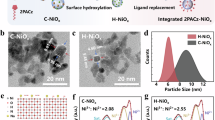
"Metal halide perovskites with remarkable optoelectronic properties have become a competitive candidate for supporting the efficiency progression of photovoltaics. As the latest record on power conversion efficiency (PCE) of research-cells being comparable to the commercialized silicon cells1-3, the industrialization of perovskite solar cells (PSCs) is on the horizon4,5. Most high-efficiency inverted perovskite solar cells using self-assembled molecules (SAMs) face the challenges due to their aggregation and hydrophobicity."
"Here we report a SAM-in-matrix strategy to distribute partial SAMs into a stable matrix of tris(pentafluorophenyl)borane, which could break the original molecular stacking-induced aggregation. 2D lattice Monte Carlo simulation and experimental results reveal that such strategy can form efficient charge transport channels. This SAM-in-matrix hole transport layer (HTL)-based devices demonstrate universally higher efficiencies for various SAMs with compac"
Metal halide perovskites offer exceptional optoelectronic properties and their research-cell power conversion efficiencies now rival commercial silicon, making industrialization of perovskite solar cells increasingly feasible. High-efficiency inverted perovskite solar cells employing self-assembled monolayers encounter performance limits from SAM aggregation and hydrophobicity. A SAM-in-matrix approach distributes partial SAMs into a tris(pentafluorophenyl)borane matrix to disrupt molecular stacking and prevent aggregation. 2D lattice Monte Carlo simulations coupled with experiments indicate that the mixed layer creates continuous, efficient charge-transport channels. Devices employing the SAM-in-matrix hole transport layer demonstrate universally improved efficiencies across several SAM chemistries.
#perovskite-photovoltaics #self-assembled-monolayers-sams #trispentafluorophenylborane #hole-transport-layer
Read at www.nature.com
Unable to calculate read time
Collection
[
|
...
]